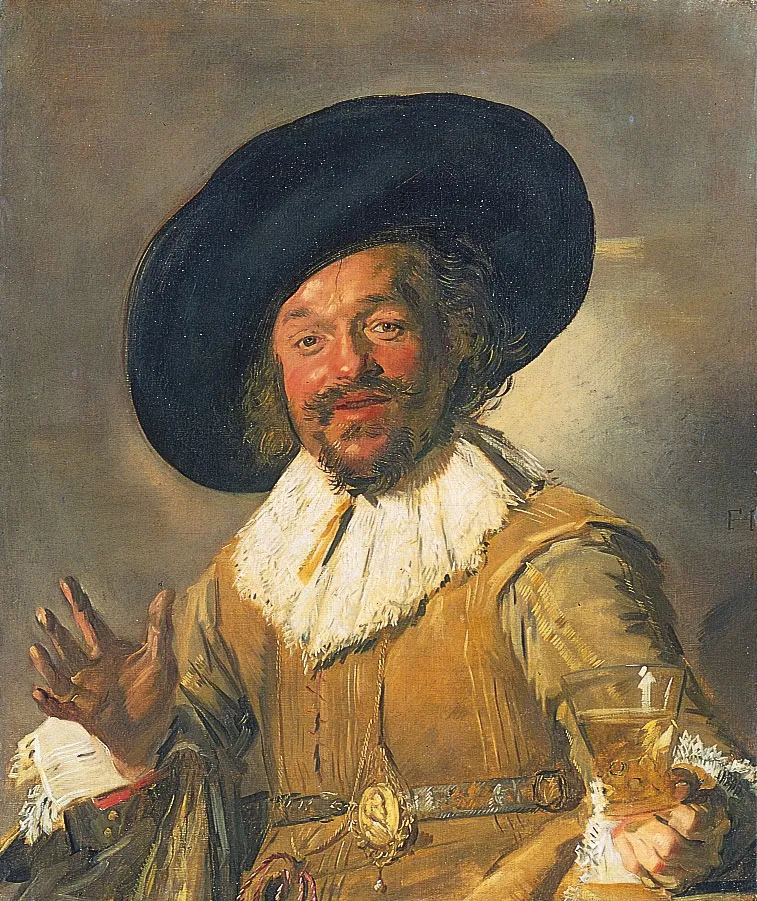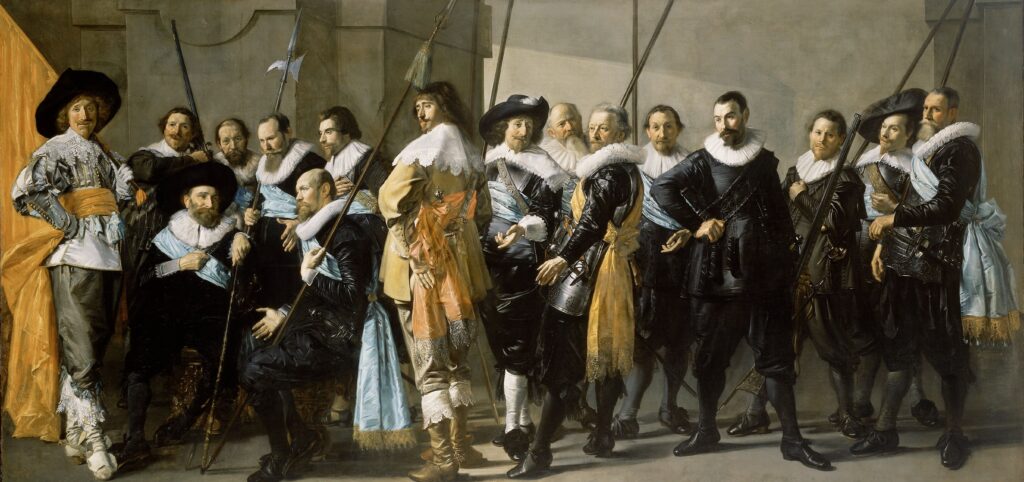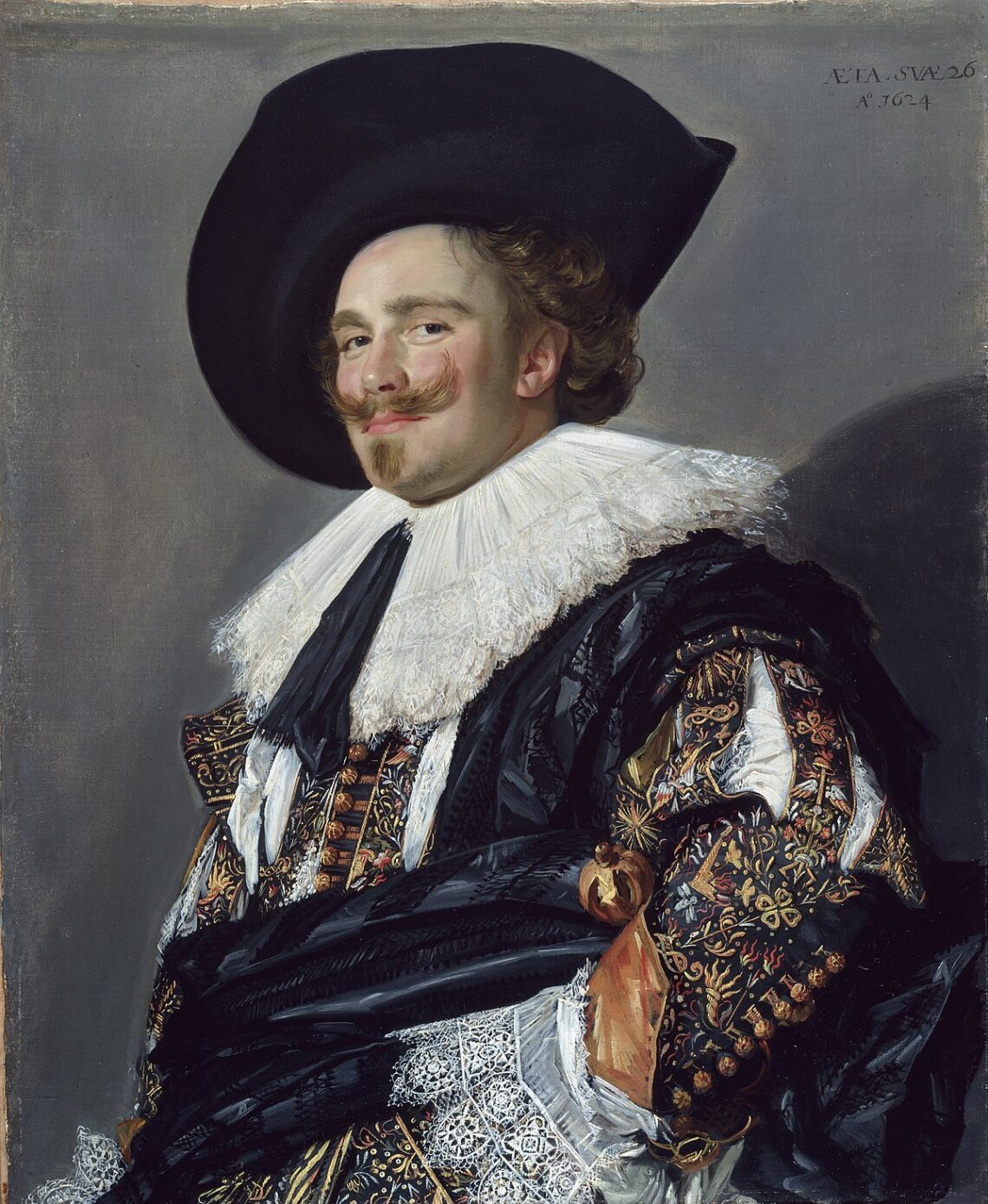Embark on a journey to the 17th century, where Frans Hals, the rebel of the Dutch Golden Age art scene, breathed life into canvases with his vibrant and lively portraits. Among his masterpieces, The Laughing Cavalier stands as a testament to Hal’s ability to capture the spirit of his subjects. In this blogpost, we’ll delve into the life of Frans Hals, trace the contours of his artistic evolution, and unravel the enigmatic allure behind The Laughing Cavalier.
Who was Frans Hals?

Frans Hals was born around 1582. He wasn’t just an artist—he was a revolutionary force in the art world. Originally hailing from Antwerp, Belgium, Hals found his artistic haven in Haarlem, Netherlands. His genius lay in his departure from the formal constraints of traditional portraiture, instead choosing to infuse his works with a dynamic and expressive quality that set him apart during the Dutch Golden Age.
His Career

Picture the 17th century, a time when Hals was rewriting the rules of portraiture. His journey, marked by a transition from meticulous details to a more liberated, expressive style, was a reflection of an artist unafraid to evolve. While financial troubles clouded his later years, Hals’ impact on art endured, leaving an indelible mark that resonated through generations.
What’s Happening in The Laughing Cavalier?

| Artist | Frans Hals |
| Date Painted | 1624 |
| Medium | Oil on canvas |
| Genre | Portrait |
| Period | Dutch Golden Age |
| Dimensions | 83.5 cm × 67.3 cm (32.9 in × 26.5 in) |
| Series / Versions | Singular |
| Where is it housed? | The Wallace Collection, London |
Transport yourself to 1624—the year Hals painted The Laughing Cavalier. This isn’t just a portrait; it’s a lively snapshot of a moment frozen in time. Our cavalier, adorned with a feathered hat, a stylish sash, and a grin that could light up a room, beckons you into a world of charm and mischief. The slightly turned pose adds an element of dynamism, as if you’ve interrupted a private, infectious laugh.
Interesting Facts
Identity Mystery: The cavalier’s identity remains a captivating mystery, an unsolved puzzle that adds an extra layer of intrigue to the painting. Countless theories have been proposed, each contributing to the mystique of this timeless masterpiece.
Expressive Technique: Hals’ brushstrokes weren’t just strokes—they were an orchestra of expression. The Laughing Cavalier is a testament to his ability to capture emotions with a dynamic and animated style that was ahead of its time. Each stroke seems to echo the laughter of the cavalier.
Influence on Later Artists: Hals wasn’t just a painter; he was a trendsetter. His departure from formal conventions influenced artists well beyond his time. The Impressionists, in particular, drew inspiration from his emphasis on capturing the genuine essence of the subject, discarding rigid formalities for a more personal touch.
The Deeper Dive
As we stand before The Laughing Cavalier, it’s not just a painting; it’s a time capsule that offers a deeper understanding of Hals’ artistic philosophy. His departure from the stiffness of traditional portraiture wasn’t just a rebellion; it was an embrace of life’s vitality. The cavalier’s infectious laughter becomes a symbol, inviting viewers to look beyond the canvas and connect with the living, breathing world captured within.
Hals’ genius lay in his ability to transcend the limitations of a static portrait. He wasn’t merely documenting appearances; he was telling stories, capturing fleeting moments, and freezing them in time. The cavalier’s mischievous smile isn’t just a quirk—it’s an invitation to share in the joy of the moment, to be a part of the narrative unfolding in that painted world.
The Legacy of Frans Hals
The Laughing Cavalier isn’t just a standalone masterpiece; it’s a chapter in the larger narrative of Frans Hals’ enduring legacy. His influence on portraiture reverberates through art history, reaching far beyond the Dutch Golden Age. The expressive freedom he championed became a touchstone for artists who sought to break free from the constraints of convention, paving the way for movements like Impressionism.
Hals’ impact isn’t measured merely in strokes of paint but in the emotions he stirred and the narratives he wove. As we gaze upon The Laughing Cavalier, we’re not just witnessing a painting; we’re entering into a dialogue with an artist who dared to challenge norms, who believed that art could be a living, breathing entity capable of transcending time and space.
Frequently Asked Questions
What does The Laughing Cavalier symbolize?
The Laughing Cavalier Who Laughs is neither laughing nor a cavalier. However, he has come to represent his painting technique and serve as an inspiration to contemporary artists.
Why is The Laughing Cavalier famous?
Frans Hals’ “The Laughing Cavalier” is well-known for showcasing the vibrant and impromptu portraiture manner of the Dutch Golden Age master. The subject is actually grinning mysteriously, which is enhanced by his tilted mustache, rather than laughing.
Conclusion
The Laughing Cavalier isn’t just a canvas; it’s an experience—a vibrant window into a bygone era, an intimate encounter with the artistic exhibition of Frans Hals. As we navigate the twists and turns of the cavalier’s mysterious identity, feel the energy of Hals’ expressive strokes, and stand in awe of the painting’s current residence at The Wallace Collection, we become part of a story that transcends centuries.













